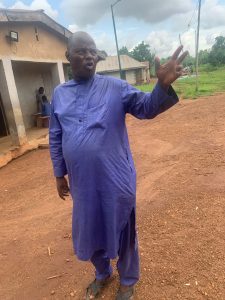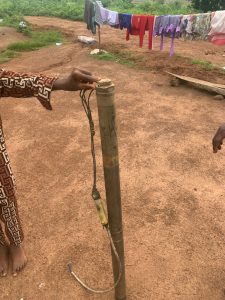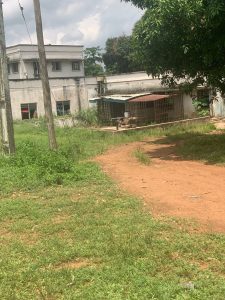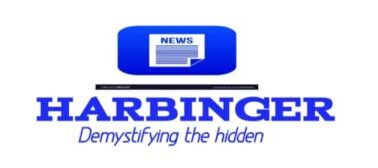By Abdulwasiu Olokooba
It was 2 p.m. on a July afternoon in Ijagbo, a community in Oyun Local Government Area of Kwara State. The sky was overcast with pregnant clouds, threatening to unleash a downpour at any moment. Yet, amidst the anticipation of rain, Usman Adam, a resident of Gaa Adamu, a small hamlet in Ijagbo, wore a worried look. His concern wasn’t about the impending rain but the crippling water scarcity that had plagued his hometown.
The absence of a reliable water source had made life unbearable, forcing residents of the community to embark on miles-long journeys in search of clean water for their daily needs.
“The major problem in this community is that we suffer from water scarcity a lot. Even though we have wells, we can’t get enough water for daily survival. There is no water to drink, cook, or even use the toilet,” Usman told The Harbinger
He continued, “The alternative we have is a good Samaritan, living about 30 miles away, who has a borehole in his house. However, it’s not every day we have access to fetch water from his house. Sometimes, they won’t allow members of the community to fetch water when they also don’t have any.”
Usman made a heartfelt appeal, urging the government to provide them with piped water, which would be an immense blessing and a huge relief. He emphasized that having access to clean water through a piped system would greatly alleviate their struggles and improve their daily lives.
“In this village, we have two hamlets. I heard the other hamlet has a solar-powered borehole serving them, but I’m not sure if it’s still working,” he concluded.
Jooro, a resident of a nearby community just a few meters from Usman’s, shared a similar tale of woe.
He recounted the struggles they had been facing due to the acute water scarcity, contrasting the good old days with the dire situation they now found themselves in.
He nostalgically remembered a time when access to water was not a challenge, but lamented how things had taken a turn for the worse, leaving them to suffer the consequences of this basic necessity.
He said, “The issue of water scarcity is one of the headaches the people of this community battle with. We have a solar-powered borehole here.
“However, the pumping machine developed a defect two years ago, and the repairer said it would cost 500,000 naira to fix,” he added.
The escalating rate of inflation has made repairing the faulty pumping machine an unaffordable luxury for the people of Gaa Jooro, leaving them with no choice but to endure the suffering caused by the resulting water scarcity. The ever-increasing costs have turned what should be a simple fix into an insurmountable challenge for the rural community.
“We have pleaded with the government several times to come and fix it for us, but all our pleas have fallen on deaf ears. So, we have no choice but to suffer,” Jooro, a resident of Gaa Jooro, mentioned.
“We have pleaded with the government several times to come and fix it for us, but all our pleas have fallen on deaf ears. So, we have no choice but to suffer,” Jooro, a resident of Gaa Jooro, mentioned.
The water scarcity in Jooro has forced residents to rely on unreliable sources to meet their daily needs. The Harbinger discovered that the community heavily depends on seasonal rainwater and wells, which are often dry, especially during the dry season. As a result, residents are frequently left without access to water, making bathing a luxury.

“The rain is the surest, but it may take about five months before it starts. There’s always a restriction on fetching well water because only a few people have wells in this community,” Jooro’s wife lamented.
She continued, “Sometimes when we go to people’s houses to fetch well water with the hope of using it for chores so our children can go to school, they send us away as if we’re not human. This situation has even made my children frustrated about going to school every morning.”

N65 Million Down the Drain, Yet no Potable Water
According to the Nigeria Demographic and Health Survey (NDHS), 60 million Nigerians lack access to drinking water. The United Nations Children’s Fund (UNICEF) notes that contaminated water leads to diseases such as diarrhea, which annually kills more than 70,000 children under the age of five.
To prevent such outbreaks in Oyun Local Government, Kwara Governor AbdulRahman AbdulRazaq awarded a contract worth 65 million naira to Seamface Global Solution in 2020 for the rehabilitation of the Oyun waterworks.
This investment was intended to restore a reliable water supply to rural communities like Gaa Jooro and Gaa Adamu, addressing the long-standing issue of water scarcity.
A visit to the facility in July 2024 revealed that the project was complete. While the completion of the project earned praise from traditional leaders in Oyun, it failed to bring relief to several communities in the council which Gaa Jooro and Gaa Adamu are inclusive. 
These communities remain cut off from access to potable water, forcing them to rely on rainfall and alternative sources. The state’s intervention, intended to alleviate water scarcity, has unfortunately not benefited these rural communities, leaving them to continue suffering from water shortages.
Despite the public funds committed to the project, residents of the communities are yet to derive the value for the money as they still scramble for water to meet their daily needs, even during the coronavirus pandemic four years ago.
Children Tend to Suffer the Most from Absence of Potable Water
The widespread lack of access to clean and potable water in numerous Nigerian households has significantly contributed to the prevalence of waterborne diseases, including cholera and typhoid, posing a major public health concern across the country.
According to UNICEF, children bear the brunt of this lack: “While all can feel the impact of water scarcity, no one suffers more than the most vulnerable children. Children and families living in vulnerable communities face the double-edged sword of coping with high water scarcity levels while having the lowest water services, making access to sufficient water especially susceptible to climate shocks and extreme events.” Over 29% of Nigerian children experience high or extremely high water vulnerability, meaning that 3 out of 10 children in Nigeria do not drink safe water daily.
Government Keeps Mum
Despite numerous attempts, The Harbinger was unable to obtain an official response from the state government regarding our findings. Honourable Usman Lade, the state commissioner of water resources, did not answer repeated phone calls and has yet to respond to multiple WhatsApp and direct messages seeking his comment on the matter.




